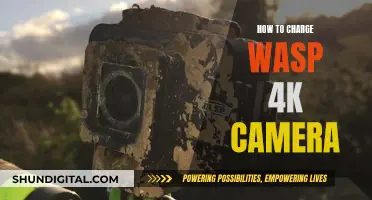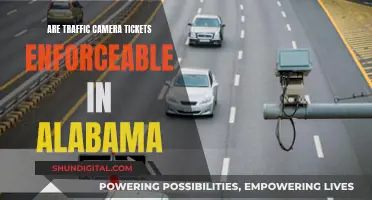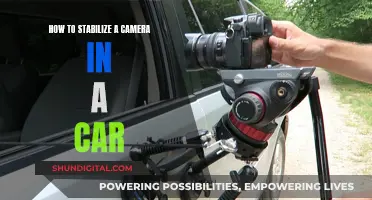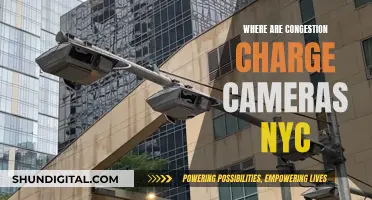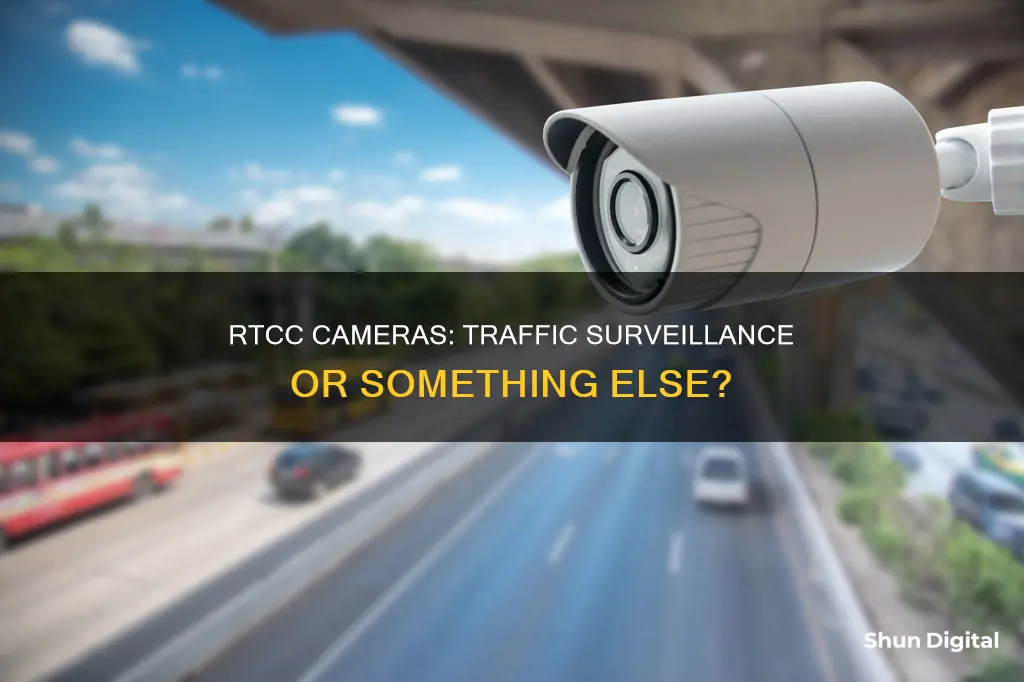
Real-Time Crime Centers (RTCCs) are centralized hubs that provide law enforcement and emergency first responders with instant information to help identify patterns and stop emerging crime. RTCCs are equipped with various technologies, including license plate reader cameras (LPR cameras), satellite imaging, mapping software, and large video monitors. While RTCCs have been effective in improving investigative leads and emergency response times, there are concerns about the impact of surveillance tools on the relationship between officers and the public, as well as the potential for abuse and invasion of privacy.
| Characteristics | Values |
|---|---|
| Purpose | To provide law enforcement with the ability to capitalise on a wide range of technologies for efficient and effective policing. |
| Data Sources | Criminal records, parole and probation files, criminal complaints, arrests, 911/311 calls, summonses, public records, satellite imaging, mapping, link analysis capacity, etc. |
| Operation | 24/7 monitoring and support |
| Benefits | Improved situational awareness, investigative capabilities, emergency response times, officer safety, and public safety. |
| Features | Instant-live video, live feed camera docking, virtual incident location mapping, full integration with computer-aided dispatch (CAD), gunshot detection technology, automated license plate readers, etc. |
What You'll Learn
- RTCCs are a centralized technology used by law enforcement and emergency first responders
- RTCCs help identify suspects with accuracy and precision
- RTCCs can be used to monitor large public events, such as parades and protests
- RTCCs can be integrated with external cameras, such as those at community centers and city parks
- RTCCs have been criticized for their potential invasion of privacy

RTCCs are a centralized technology used by law enforcement and emergency first responders
Real-Time Crime Centers (RTCCs) are centralized technologies used by law enforcement and emergency first responders. RTCCs provide a broad range of current and evolving technologies in a single hub, enhancing the situational awareness and investigative capabilities of law enforcement agencies. This allows officers to respond to crimes in real time, with improved efficiency, operational intelligence, and a proactive focus on officer, citizen, and community safety.
RTCCs offer instant information to help identify patterns and stop crimes as they emerge. They provide access to live video, live feed camera docking, virtual incident location mapping, and full integration with computer-aided dispatch (CAD) systems. This technology assists in monitoring situations and coordinating responses, especially during major incidents. For example, during a shooting incident in Birmingham, Alabama, law enforcement officers identified a person of interest within five minutes with the help of an RTCC.
RTCCs also enable the analysis of crime data and statistics, allowing law enforcement to look for trends and patterns to better deploy resources and develop strategies to prevent crime. This analytical capability aids in crime reduction and enhances the effectiveness of investigations.
In addition to the technological advantages, RTCCs can also centralize human resources, coordinating the efforts of sworn and nonsworn personnel to maximize the likelihood of a swift and effective response to crimes. This includes directing attention to high-crime areas, active crimes in progress, and large-scale public events that may require a law enforcement presence.
The centralized nature of RTCCs empowers law enforcement with enhanced visibility, unified awareness, and improved response capabilities, ultimately contributing to safer communities.
Understanding Aperture Mode: Creative Control Over Your Camera
You may want to see also

RTCCs help identify suspects with accuracy and precision
Real-Time Crime Centers (RTCCs) are an invaluable tool for law enforcement agencies, offering enhanced situational awareness and quicker response times. One of the key advantages of RTCCs is their ability to help identify suspects with accuracy and precision, which is crucial for effective policing and community safety.
RTCCs utilize a range of technologies, including license plate reader cameras (LPR cameras) and high-definition surveillance cameras, to establish actionable links between individuals and crimes. For instance, in Birmingham, Alabama, law enforcement officers were able to identify a person of interest within five minutes of a shooting incident, demonstrating the power of RTCCs in rapid suspect identification.
The centralized hub of an RTCC allows law enforcement to access and analyze real-time data, such as live video footage, camera feeds, and vehicle location information. This enables officers to respond swiftly and effectively to emerging situations. In the case of the Atlanta mass shooting, the RTCC, powered by Fusus, alerted authorities to the suspect in just 22 minutes. By integrating CCTV camera feeds and utilizing license plate reader technology, officers were able to track the suspect's movements and locate them over 10 miles from the original incident scene.
RTCCs also provide access to vast data warehouses, containing criminal records, complaints, arrests, and national crime records. This information can be analyzed to identify patterns and establish links between suspects and criminal activity. The link analysis capacity of RTCCs can track suspects to their known addresses and predict their likely locations, aiding in the apprehension of suspects.
Furthermore, RTCCs enable inter-agency collaboration by acting as a centralized information hub. This ensures that all responding units, including different law enforcement branches and emergency services, have a unified understanding of the situation, reducing miscommunication and enhancing operational efficiency.
Surround Camera Systems: Which Cars Offer This Feature?
You may want to see also

RTCCs can be used to monitor large public events, such as parades and protests
Real-Time Crime Centers (RTCCs) are centralized hubs that integrate live video and data feeds from various sources to enhance the situational awareness and response capabilities of law enforcement and emergency first responders. RTCCs are particularly useful in monitoring large-scale public events, such as parades and protests, where law enforcement agencies can leverage this technology to ensure public safety and effectively manage resources.
RTCCs provide a comprehensive view of events as they unfold, allowing law enforcement to make informed decisions and deploy resources efficiently. This technology aids in monitoring crowds, identifying potential threats, and coordinating responses in real-time. For example, during a parade, RTCCs can help law enforcement oversee the event, detect any suspicious activities, and respond promptly if needed.
The integration of live video footage and data from multiple sources, such as CCTV cameras, body-worn cameras, and license plate readers, offers a unified view of the event. This enables law enforcement to track and manage large crowds, identify potential risks, and ensure the safety of participants and bystanders. RTCCs can also assist in locating and apprehending individuals involved in unlawful activities during these events, as facial recognition and license plate reader technologies can be used to identify suspects.
Additionally, RTCCs enable law enforcement to monitor and respond to protests, ensuring the safety of participants while protecting property and maintaining public order. With RTCCs, law enforcement can identify areas where protests are concentrated, track the movement of protesters, and deploy resources accordingly. This technology helps maintain a balanced approach, allowing peaceful demonstrations while preventing potential violence or property damage.
Furthermore, RTCCs can assist in post-event investigations and evidence gathering. Recorded footage and data from RTCCs can be reviewed to identify suspects, analyze their movements, and support criminal investigations. This capability helps law enforcement in their efforts to identify and apprehend individuals involved in unlawful activities during large public events, contributing to a safer community.
Focusing Your Huawei P10 Camera: Tips and Tricks
You may want to see also

RTCCs can be integrated with external cameras, such as those at community centers and city parks
Real-Time Crime Centers (RTCCs) are centralized hubs that integrate live video and data feeds from various sources to improve situational awareness and investigative capabilities for law enforcement and emergency first responders. RTCCs have proven to be effective in providing objective, data-driven evidence and improving investigative leads, especially in violent crimes and property crimes.
One of the key advantages of RTCCs is their ability to integrate with external cameras, such as those found in community centers and city parks. This integration allows law enforcement to monitor a wider area and respond promptly to any incidents. For instance, the City of Shreveport Real Time Crime Center outlines a process for businesses, residences, or other establishments to integrate their camera systems with the RTCC. By obtaining approval, ensuring compatibility, and setting up the necessary equipment, these entities can provide real-time access to their exterior camera systems, enhancing the RTCC's coverage and capabilities.
The integration of external cameras is further facilitated by modern, cloud-based platforms like Flock Safety's software. This platform allows RTCCs to leverage existing camera systems from businesses and communities, providing a cost-effective solution for enhanced surveillance. With Flock Safety, there is no need for additional hardware, and the system can easily integrate with older, closed-loop systems.
The ability to integrate with external cameras in community centers and city parks significantly expands the reach of RTCCs. This integration not only helps in monitoring large crowds and high-crime areas but also assists in locating missing persons, tracking suspects, and improving overall community safety. By utilizing these external camera feeds, RTCCs can provide a more comprehensive view of ongoing incidents, enabling law enforcement to respond quickly and effectively.
The Man with a Camera: When Was It Made?
You may want to see also

RTCCs have been criticized for their potential invasion of privacy
Real-Time Crime Centers (RTCCs) have been criticized for their potential invasion of privacy. RTCCs are centralized hubs that utilize a wide range of technologies, including live-feed cameras, to assist law enforcement and emergency first responders in identifying patterns and responding to crimes. While these technologies can improve situational awareness and lead to quicker response times, they also raise concerns about the privacy of individuals.
One of the main concerns with RTCCs is the potential for unwarranted surveillance and intrusion into people's private lives. The use of live-feed cameras and data collection technologies allows law enforcement to monitor individuals and track their movements, which can be seen as an invasion of privacy. This is especially true when RTCCs are used in high-crime areas or to monitor large crowds, as it may result in the indiscriminate surveillance of innocent people.
Another issue is the collection and storage of large amounts of personal data by RTCCs. RTCC data sources include criminal records, arrest records, 911/311 calls, and public records, among others. While this data can be useful for identifying suspects and solving crimes, it also raises questions about the privacy and security of this information. There is a risk that this data could be misused or fall into the wrong hands, leading to further privacy invasions.
The use of RTCCs also raises concerns about the right to privacy, which is recognized as a fundamental human right in many countries. The right to privacy protects individuals from unjustifiable intrusions into their personal lives and private affairs. By collecting and analyzing data on individuals, RTCCs may infringe upon this right, especially if the data is used for purposes beyond crime prevention and investigation.
Furthermore, RTCCs can potentially be used to target specific groups or communities. With access to vast amounts of data and surveillance tools, law enforcement may engage in discriminatory practices or profiling based on factors such as race, religion, or political beliefs. This could result in the unfair targeting of certain groups and a further erosion of trust between law enforcement and the communities they serve.
While RTCCs have the potential to improve public safety and aid in crime prevention, it is crucial to address these privacy concerns. This includes implementing strict guidelines and oversight regarding data collection, storage, and usage, as well as ensuring that RTCCs are used ethically and responsibly, with a focus on protecting the privacy rights of individuals. Striking a balance between public safety and individual privacy is essential to ensure that RTCCs are used in a manner that respects the rights and freedoms of all citizens.
Calibrating Your Lith Battery: A Step-by-Step Guide
You may want to see also
Frequently asked questions
RTCC stands for Real-Time Crime Center. It is a centralized technology that utilizes data and video feeds from various sources to assist law enforcement and emergency first responders in their efforts to prevent and respond to crimes.
RTCCs gather and analyze data from various sources, including license plate readers, security cameras, and police databases. This information is then used to identify suspects, track their movements, and provide real-time support to officers in the field. RTCCs also help with investigations, allowing police to gather evidence and solve cases faster.
One of the main benefits of RTCCs is the ability to improve emergency response times. By having instant access to live video feeds and data, law enforcement can quickly identify and locate suspects, as well as coordinate responses to ongoing incidents. RTCCs also enhance situational awareness, allowing officers to make more informed decisions and improve community safety.



